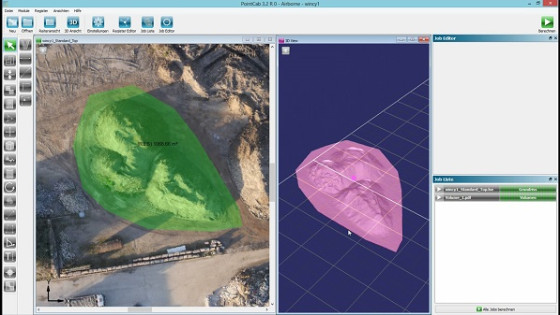

- Zed camera opencv implementation to process point clouds how to#
- Zed camera opencv implementation to process point clouds full#
The coordinate we read the source coordinates from is simultaneously the destination coordinate. The source coordinate is encoded in each of the array's values. undistort_map1 contains two arrays, one for x and one for y, with the same shape as our image.
Zed camera opencv implementation to process point clouds how to#
You can also specify a different camera or projection matrix if you like.įurther, undistort_map1 tells us how to construct a distortion-free image by informing us where, in the distorted image ( source coordinate), we need to fetch a pixel from and where, in the undistorted image ( destination coordinate), to place it. Remember, we only care about undistortion at the moment.įor the fourth parameter, we repeat cam1_camera_matrix to preserve the pinhole parameters. The third parameter np.eye(3) passes the Identity matrix as extrinsic data to disable the rectification component. The first and second parameters are the camera matrix and distortion coefficient variables we previously constructed.

To undistort using KannalaBrandt, we need to access the cv=cv2.fisheye module. Check out the OpenCV documentation for more details. For now, we will ignore the rectification component.
Zed camera opencv implementation to process point clouds full#
We will re-use this function later on to its full extent. This function can create undistortion maps as well as undistort and rectification maps. Keen eyes will notice that we are using initUndistortRectifyMap. Let’s briefly discuss the parameters of initUndistortRectifyMap and then look at the undistort map itself: We could have also directly listed each parameter in sequence as follows cam1_distortion = np.array(, cam1_intrinsics, cam1_intrinsics, cam1_intrinsics]]) but that is quite tedious to write, and visually noisy for anyone to read. To construct cam_distortion use Pythons list comprehension to shorten the code. We set KannalaBrandt during calibration, determining the sequence we used in the code. The sequence of the parameters depends on the camera distortion model you selected during calibration. The variable cam1_distortion is an array with a particular sequence of distortion parameters. The camera matrix we define here will be the basis for our pinhole camera model. It takes care of linear algebra as well as advanced filtering operations. NumPy is a powerful tool that will benefit us greatly later on. cam1_camera_matrix is a 3x3 matrix that we save in the form of a NumPy array. We create cam1_camera_matrix from the cam1_intrinsics parameters. We do the same to get only the intrinsic parameters. For example, we extract all parameters relating to cam1 by looking into sensors-> cam1 or in Python with. We use Python dictionaries to easily extract only the relevant parts of the tree structure in the YAML file. $ īefore we continue, a few notes on what we did in the code. Print ( type ( calibration_parameters ) )


 0 kommentar(er)
0 kommentar(er)
